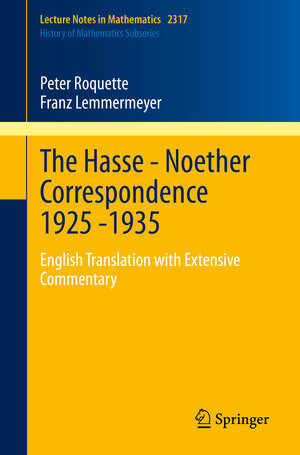
“The letters themselves are arranged chronologically. Each is prefaced by a short one-or-two-line description of the contents and is followed by extensive commentary from the editors, which serves to set each letter into a wider mathematical and historical context … . The letters present a striking image of Noether and her mathematics in her own words, and as the editors note, they are a `rich source' (p. 5) for anyone who is interested in the development of mathematical ideas.” (Christopher D. Hollings, Mathematical Reviews, August, 2024)
The Hasse - Noether Correspondence 1925 -1935
English Translation with Extensive Commentary
von Peter Roquette und Franz Lemmermeyer, aus dem Deutschen übersetzt von Robert PerlisProviding the first comprehensive account of the widely unknown cooperation and friendship between Emmy Noether and Helmut Hasse, this book contains English translations of all available letters which were exchanged between them in the years 1925-1935. It features a special chapter on class field theory, a subject which was completely renewed in those years, Noether and Hasse being among its main proponents. These historical items give evidence that Emmy Noether's impact on the development of mathematics is not confined to abstract algebra but also extends to important ideas in modern class field theory as part of algebraic number theory. In her letters, details of proofs appear alongside conjectures and speculations, offering a rich source for those who are interested in the rise and development of mathematical notions and ideas. The letters are supplemented by extensive comments, helping the reader to understand their content within the mathematical environment of the 1920s and 1930s.



